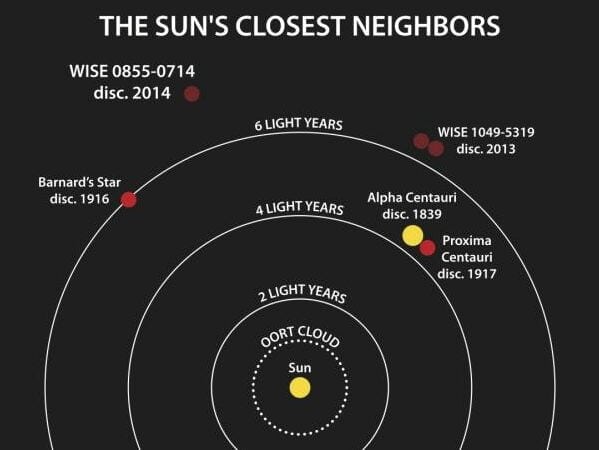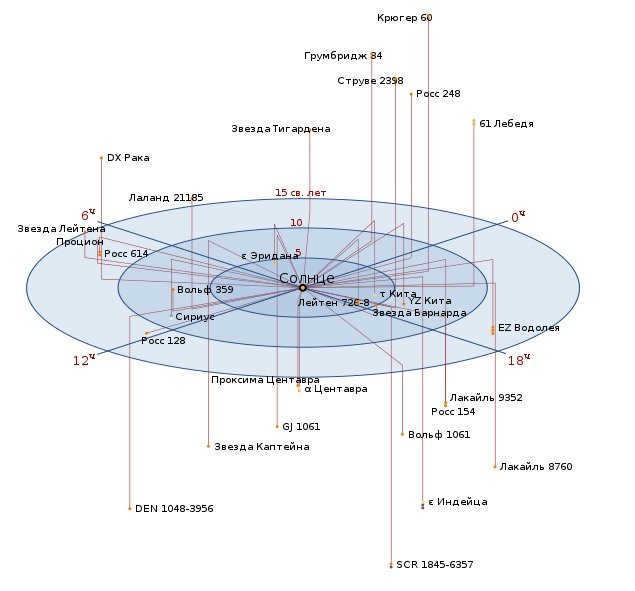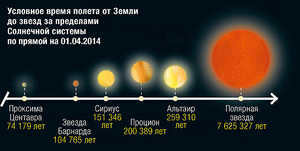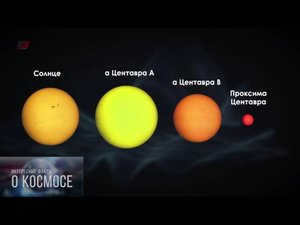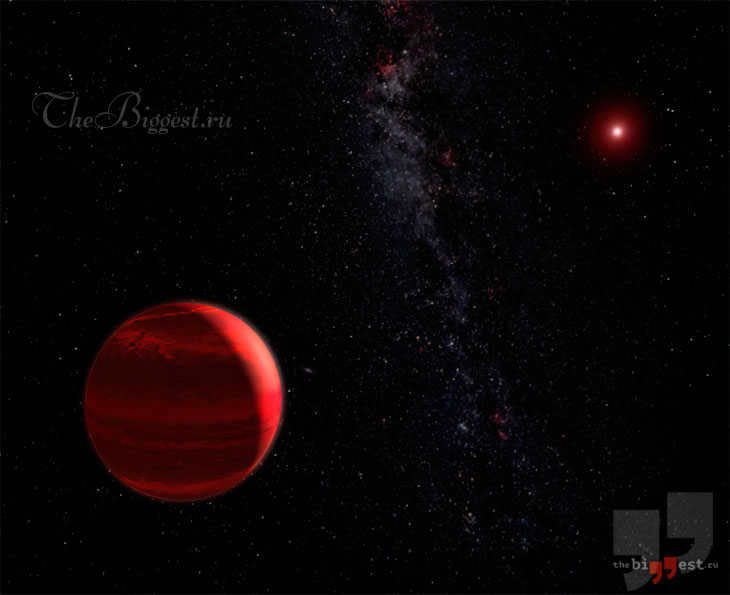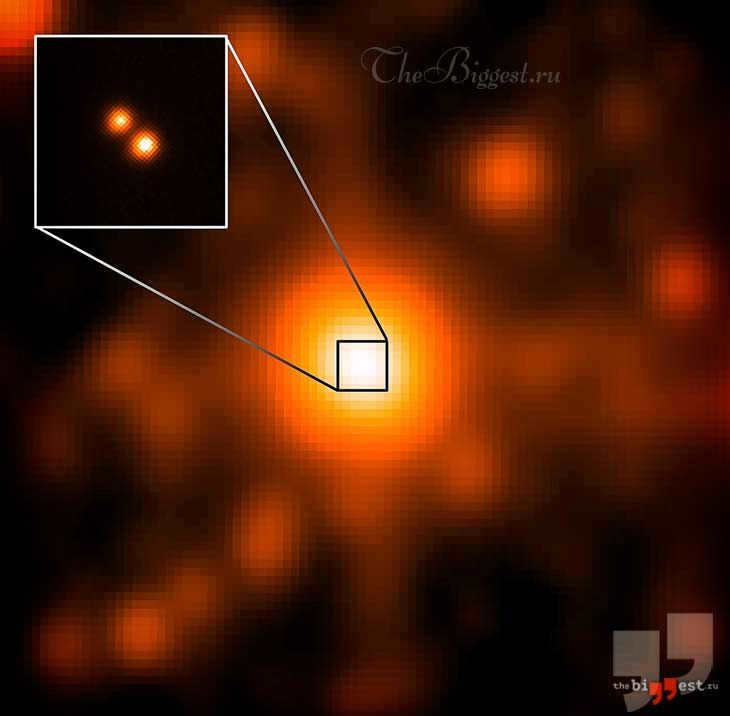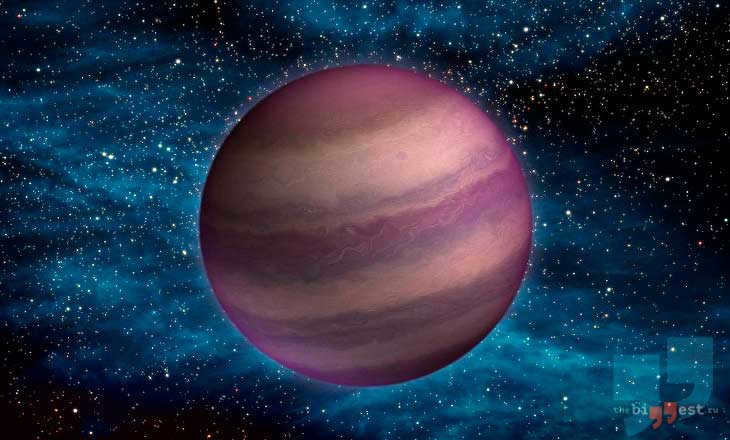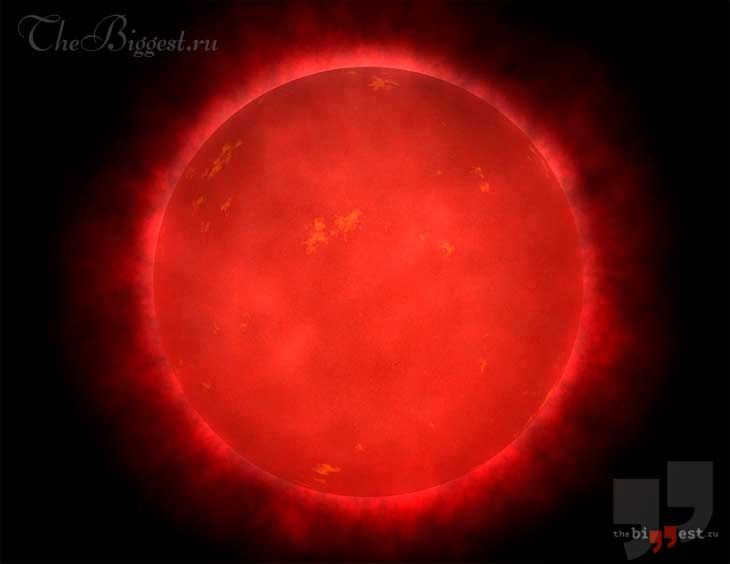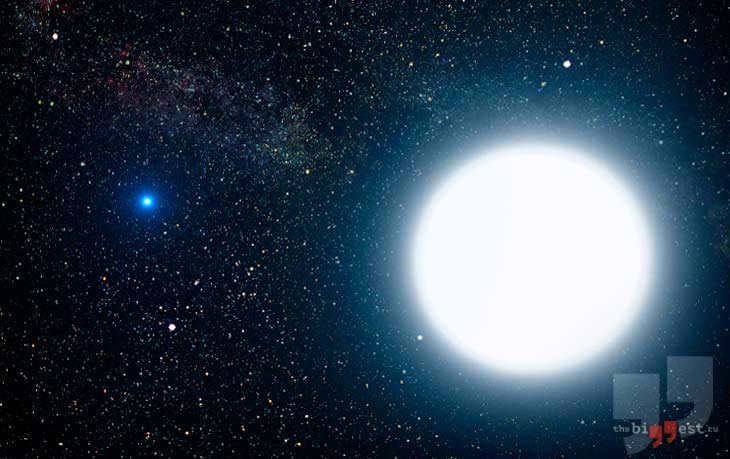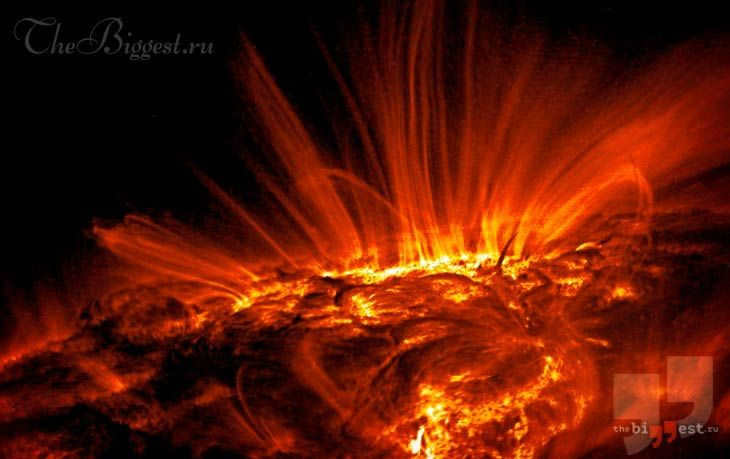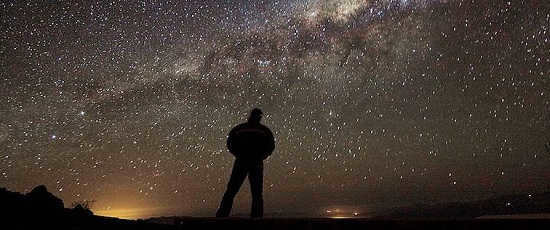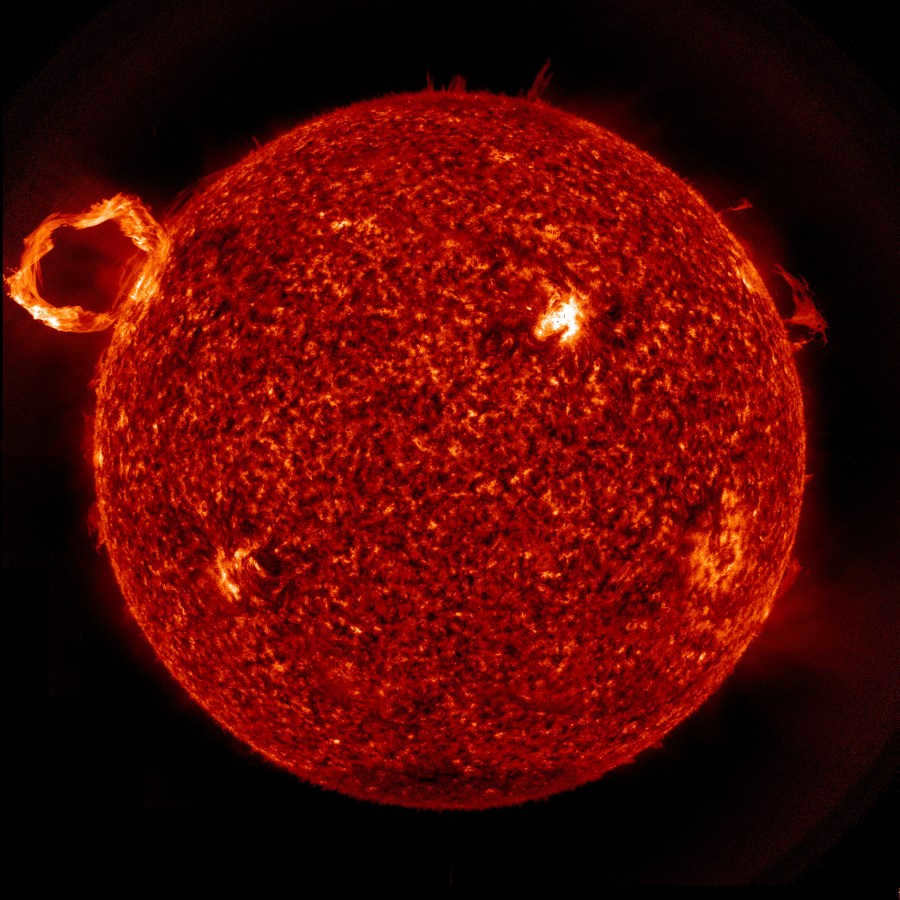

The Sun, which is situated closest to our planet, Earth, is an enormous ball of incandescent plasma positioned at the core of our solar system. It accounts for over 99.86% of the total mass of the solar system and serves as the primary source of energy required for all life forms on Earth. The ancient civilizations, including the Romans, held it in reverence as they believed it to be the bringer of life. It was referred to by various names, such as Sol by the Romans and Helios by the Greeks.
Distinctive Features
The Sun possesses a size of 1392000 kilometers or 109 times the Earth’s diameter. It has the capacity to accommodate 1300000 planets similar in size to Earth. Encircling it are 8 planets along with their moons, numerous dwarf planets, asteroids, comets, and cosmic dust. It surpasses all other celestial bodies in the solar system in terms of mass.
Approximately 4.6 billion years ago, it took shape from a massive gas and dust cloud known as the protosolar nebula.
Over the course of millions of years, the gas and dust underwent compression, leading to the formation of a star and planets. Once gravity had compressed the hydrogen to a point where a thermonuclear reaction could commence, our radiant star was ignited.
The Sun, our nearest star, is gradually increasing in temperature. This process will persist for an additional 7 billion years. Once all the hydrogen stores in its core are depleted, it will undergo a transformation into a red giant, engulfing the inner planets. Eventually, it will shed its outer layers and transform into a white dwarf as it reaches the end of its lifespan.
Organization
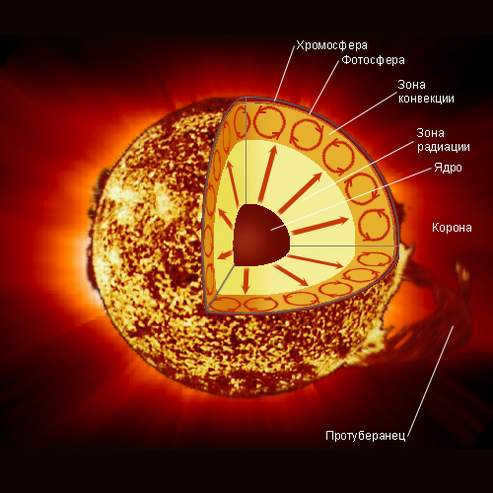
The outermost layer of the Sun, known as the photosphere, has an average temperature of approximately 5800 degrees Kelvin. This layer is composed of three main layers: the photosphere, the chromosphere, and the corona.
As one delves deeper into the Sun’s interior, the temperature and pressure steadily rise. At the core, the temperature reaches a staggering 15.7 million Kelvin, and the pressure becomes intense enough to facilitate nuclear fusion. Within the core, protons are fused together to form helium atoms, leading to the release of immense amounts of energy.
The phenomenon
Despite being primarily composed of plasma, our celestial body possesses a remarkably strong magnetic field. It exhibits both north and south magnetic poles, with the magnetic field lines generating the visible phenomenon we observe on its surface. Notably, when these field lines penetrate the Sun’s photosphere, they give rise to dark spots. Additionally, there are prominences, massive plasma ejections that travel along the magnetic field lines.
Coronal mass ejections and flares occur as a result of the reconfiguration of the magnetic field lines.
This celestial activity experiences periodic fluctuations over an 11-year cycle. During the lowest point known as the minimum, the surface is almost devoid of spots. Conversely, at the peak of the cycle, referred to as the solar maximum, the number of spots reaches its maximum level.
The sun continually emits vast quantities of heat and charged particles, known as solar wind. Without a magnetic field, these charged particles would pose a significant threat to all life on Earth. The solar wind carries these charged particles to the outer reaches of our planet’s atmosphere, where they create a magnetic field that acts as a protective barrier against the influx of interstellar wind. This barrier, known as the heliopause, is essential for shielding our solar system from cosmic rays.
Charged particles from the solar wind can interact with satellites, power lines, and disrupt radio communications. These particles also play a role in the creation of the aurora borealis, or northern lights. Light is a crucial element for life on Earth.
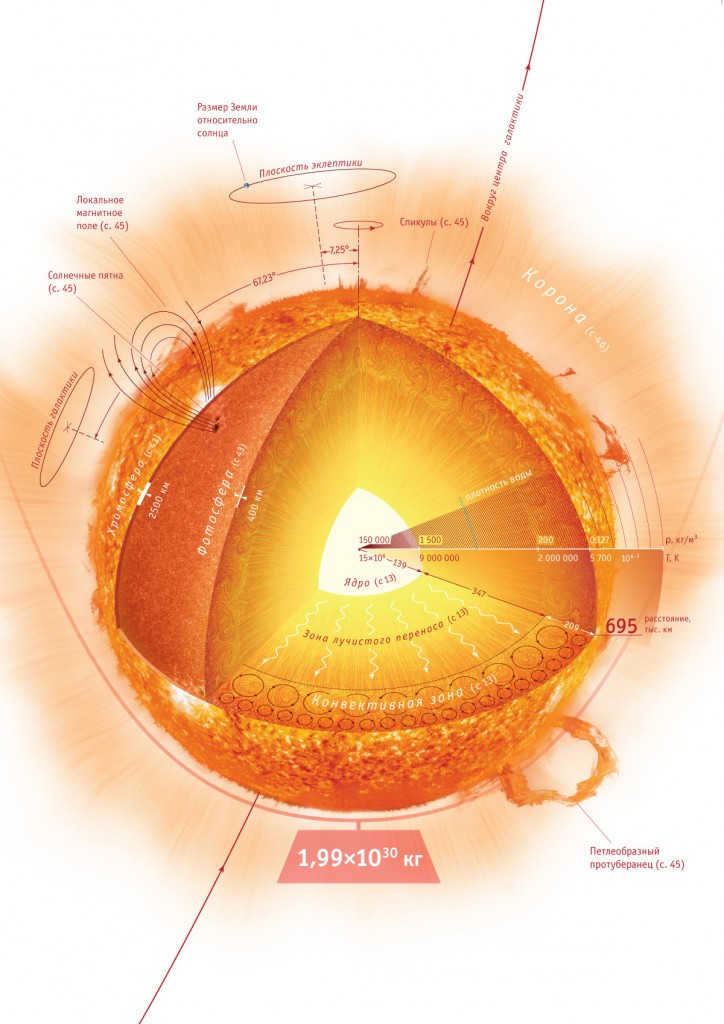
While the Sun may actually be white, it appears yellow to us due to the atmospheric influence.
The Sun’s rotation on its axis takes approximately one month, although this is a rough estimate due to the Sun being a ball of plasma. Different parts of the Sun rotate at different speeds, making it difficult to determine when it will complete a full revolution. For instance, near the equator, it takes about 25.4 days, while at the poles, it takes approximately 36 days.
Our star is primarily made up of hydrogen (74%) and helium (25%), along with traces of other elements.
The core is the primary site for nuclear fusion reactions to occur.
Surrounding the core is the radiative zone, where gamma ray photons are emitted and absorbed by hydrogen atoms. It can take a photon up to 100,000 years to traverse the radiative zone. Beyond the radiative zone is the convective zone, where plasma rises and transports energy to the surface before cooling.
Only 5% of the stars in the Milky Way are larger than our Sun, while the majority are small red dwarf stars.
There are some stars in the universe that are significantly larger and brighter than our star, with some being 100,000 times brighter and containing 100 times more mass. Our star, in comparison, is relatively young. The older stars that formed billions of years ago have a much lower abundance of heavy elements.
Solar flares
When discussing the nearest star to the Sun, it is more accurate to consider it from the perspective of the Earth’s orbit around the Sun. However, in the grand scheme of the cosmos, this detail is not of great significance.
So, what star is the Sun’s closest neighbor?
For a long time, it was believed that the closest star to the Sun is Alpha Centauri, situated in the southern hemisphere of the sky. It is a whopping 4.37 light-years away. However, in 1915, a star called Proxima Centauri was discovered near Alpha Centauri, and it is highly likely that it is part of the Alpha Centauri system.
Therefore, in essence, we can conclude that the Alpha Centauri system is the nearest star system to Earth, including all of its components.
Find out more below.
Nearest star to Earth
The biggest star in the Alpha Centauri system is Alpha Centauri A.
Close by is the second star, Alpha Centauri B, which is slightly smaller.
Both of these stars orbit around a shared center of mass, and as a result, they can both become the nearest star to Earth at different times.
However, there is another tiny star, the red dwarf Proxima Centauri, that revolves around this pair of Alpha Centauri stars.
The paths of these three stars in relation to each other are quite intricate.
And yet, it is currently Proxima Centauri that holds the title of the nearest star to Earth.
Proxima Centauri
Proxima Centauri is classified as a red dwarf, and its apparent magnitude is a mere 11.05 m. With an absolute magnitude of 15.49 m, it is easily overshadowed by other stars. However, even if we were situated on Alpha Centauri, we would still be able to observe Proxima Centauri as a faint star with a magnitude of approximately 5.
It is worth noting that the distance between the Sun and Proxima Centauri spans a staggering 4.22 light years.

There is a theory that Proxima Centauri revolves around the Alpha Centauri system every 500,000 years. Because of this, Proxima Centauri is sometimes referred to as Alpha Centauri C, making it the third component of the Alpha Centauri star system.
The radius of Proxima Centauri’s orbit around Alpha Centauri is approximately 15,000 ± 700 astronomical units, which is equivalent to about 0.21 light-years. To put this in perspective, the distance from Proxima Centauri to the Sun is only 20 times greater than this value.
The inclusion of Proxima Centauri in the system is not fully confirmed. However, evidence supporting this assumption is the nearly identical motion vectors of Proxima Centauri and the Alpha Centauri pair. Additionally, these motion vectors are also observed in other stars that are part of the same system.
Using the Hubble telescope, researchers conducted a thorough investigation of the vicinity surrounding Proxima Centauri and determined that there are no red dwarfs present within its orbit. Additionally, they discovered that there are no super-Earths, which are planets slightly larger than Earth, situated in the habitable belt.
Nevertheless, on August 24, 2016, the European Southern Observatory officially verified the existence of a planet similar to Earth in the habitable zone of Proxima Centauri. This newly discovered planet has been designated with the name “Proxima Centauri b.”
There is ongoing debate about the potential for life on Proxima Centauri b.
It is fortunate that the planet is located within the habitable zone, which is already a stroke of luck considering how narrow this zone is around such a small star.
However, Proxima Centauri is a star that experiences periodic flares, causing a significant increase in X-ray radiation. This poses a major challenge for any potential life forms (similar to protein-based life on Earth).
The Nearest Stars to Earth in the Past and Future
Stars are not stationary; they are constantly in motion, although this movement is not noticeable within the span of a human lifetime. Has Proxima Centauri always held the title of the closest star to the Sun, and how long will it continue to do so?
Proxima Centauri has been the nearest star to the Sun for the past 32,000 years, and it will remain so for a significant amount of time. However, in 33,000 years, the closest star to the Sun will be Ross 248, a solitary star located in the Andromeda constellation. At present, Ross 248 is situated 10.3 light years away from the Sun, which is 2.5 times the current distance to Proxima Centauri.
On this page, you can explore a compilation of the nearest stars to our planet and discover their key features.
Following the tabular data, you will find a visual representation showcasing the relative position of these stars with respect to the Sun.
| 0 | Solar system | Sun | G2V | −26,72 ± 0,04 | 4,83 | change as the Sun moves along the ecliptic | 8.32 ± 0.16 sv. min. | |
| 1 | α Centauri | Proxima Centauri | M5.5Ve | 11,09 | 15,53 | 14 h 29 m 43.0 s | −62° 40′ 46″ | 4,2421 ± 0,0016 |
| A | G2V | 0,01 | 4,38 | 14 h 39 m 36.5 s | −60° 50′ 02″ | 4,3650 ± 0,0068 | ||
| B | 1,34 | 5,71 | 14 h 39 m 35.1 s | −60° 50′ 14″ | ||||
| 2 | Barnard’s Star | M4Ve | 9,53 | 13,22 | 17 h 57 m 48.5 s | +04° 41′ 36″ | 5,9630 ± 0,0109 | |
| 3 | Luman 16 | A | L8 | 23,25 | 10 h 49 m 15.57 s | −53° 19′ 06″ | 6,588 ± 0,062 | |
| B | L9/T1 | 24,07 | ||||||
| 4 | WISE 0855-0714 | Y | 08 h 55 m 11 s | −07° 14′ 43″ | 7,18 +0,78 −0,65 | |||
| 5 | Wolf 359 | M6V | 13,44 | 16,55 | 10 h 56 m 29.2 s | +07° 00′ 53″ | 7,7825 ± 0,0390 | |
| 6 | Laland 21185 | M2V | 7,47 | 10,44 | 11 h 03 m 20.1 s | +35° 58′ 12″ | 8,2905 ± 0,0148 | |
| 7 | Sirius | A | A1V | −1,43 | 1,47 | 06 h 45 m 08.9 s | −16° 42′ 58″ | 8,5828 ± 0,0289 |
| B | DA2 | 8,44 | 11,34 | |||||
| 8 | Leiten 726-8 | A | M5,5Ve | 12,54 | 15,40 | 01 h 39 m 01.3 s | −17° 57′ 01″ | 8,7280 ± 0,0631 |
| B | M6Ve | 12,99 | 15,85 | |||||
| 9 | Ross 154 | M3,5Ve | 10,43 | 13,07 | 18 h 49 m 49.4 s | +23° 50′ 10″ | 9,6813 ± 0,0512 | |
| 10 | Ross 248 | M5.5Ve | 12,29 | 14,79 | 23 h 41 m 54.7 s | +44° 10′ 30″ | 10,322 ± 0,036 | |
| 11 | WISE 1506+7027 | T6 | 15 h 06 m 49.9 s | +70° 27′ 36″ | 10,521 | |||
| 12 | ε Eridanus | K2V | 3,73 | 6,19 | 03 h 32 m 55.8 s | −09° 27′ 30″ | 10,522 ± 0,027 | |
| 13 | Lacaille 9352 | M1.5Ve | 7,34 | 9,75 | 23 h 05 m 52.0 s | −35° 51′ 11″ | 10,742 ± 0,031 | |
| 14 | Ross 128 | M4Vn | 11,13 | 13,51 | 11 h 47 m 44.4 s | +00° 48′ 16″ | 10,919 ± 0,049 | |
| 15 | WISE 0350-5658 | Y1 | 03 h 50 m 00.32 s | −56° 58′ 30.2″ | 11,208 | |||
| 16 | EZ Aquarius | A | M5Ve | 13,33 | 15,64 | 22 h 38 m 33.4 s | -15° 18′ 07″ | 11,266 ± 0,171 |
| B | M? | 13,27 | 15,58 | |||||
| 17 | Procyon | A | F5V-IV | 0,38 | 2,66 | 07 h 39 m 18.1 s | +05° 13′ 30″ | 11,402 ± 0,032 |
| B | DA | 10,70 | 12,98 | |||||
| 18 | 61 Swan | A | K5V | 5,21 | 7,49 | 21 h 06 m 53.9 s | +38° 44′ 58″ | 11,403 ± 0,022 |
| B | K7V | 6,03 | 8,31 | 21 h 06 m 55.3 s | +38° 44′ 31″ | |||
| 19
Position of the nearest stars to Earth in space: To illustrate the motion of stars in relation to the Sun, we can add vectors to indicate which stars are lagging behind and which are moving closer, as well as a vector pointing towards the center of the galaxy. It’s an intriguing concept, but it’s complicated to execute, mainly because there is no readily available data on the exact vectors and representing them on this projection is challenging. Nikolai, September 11, 2021 What if we shift the Sun away from the center and position it in a more current point? “To a more relevant point” – what exactly is that point? I’m not adept at telepathy. By the way, this article delves into the closest celestial body to our planet, namely the Sun. Hence, the depiction with the Sun positioned at the center is entirely fitting. When sharing content from this website, it is mandatory to include a hyperlink to kosmoved.ru. Since time immemorial, mankind has gazed up at the heavens, where countless stars have captivated and inspired contemplation of the cosmos and the world around us. Throughout the ages, knowledge has been amassed and organized. As it became evident that stars are not merely luminescent dots, but rather substantial celestial entities of immense proportions, our forebears harbored the aspiration to voyage to them. However, first they had to ascertain their distance. Distinguishing between a star and a planetHere are the key factors that set them apart:
The nearest star to EarthIf we are discussing the star that is closest to us within our solar system, then it is, without a doubt, the Sun. The Sun is not only a star, but it is also the one that is nearest to us. Additionally, it serves as the central point of our solar system. Without the Sun, life on our planet would be impossible, and it is thanks to this star that Earth came into existence. For this reason alone, it is worth giving the Sun our utmost attention. Similar to all celestial bodies, the Sun primarily consists of helium and hydrogen. The latter element undergoes a cyclic transformation into the former. As thermonuclear reactions occur, heavier elements are produced. Additionally, the accumulation of these elements increases with the age of the star. Our Sun is considered old, approximately 5 billion years old. The mass of the nearest star to Earth is a staggering 595,800,000,000,000,000,000,000,000,000,000 Earth tons (although it is usually measured in alternative units, this number is evidently the most significant). The Sun has a diameter of 1,392,000 kilometers. Its surface temperature can reach an astounding 1,500,000 degrees Celsius. The temperature increases towards the center. The Sun’s atmosphere consists of three distinct parts: When discussing the closest star beyond our solar system, it is the relatively small Proxima Centauri. The most brilliant celestial bodies outside of our solar systemProxima CentauriIt is part of a trinary system located approximately four light-years away from us. Scientifically, a light-year is referred to as a parsec. The star’s name itself, Proxima, is derived from Latin and means “nearest,” indicating that even ancient civilizations recognized its distinct characteristics and proximity within the cosmos. Although four parsecs may seem insignificant within the vast expanse of the Universe, it is an immense distance for humanity. It would require more than a single generation to traverse and reach the outer reaches of Proxima Centauri. It is impossible to spot it in the vast expanse of stars. Its presence in the sky can only be revealed by using a telescope. Its brightness is much dimmer than the Sun, about 150 times fainter. It is also smaller in size and has a surface temperature that is twice as low. Scientists classify this celestial body as a brown dwarf and speculate that the chances of finding planets near it are slim. Therefore, it seems futile to embark on a journey there.
Alpha CentauriMeanwhile, the nearby star system Alpha Centauri is also worth mentioning – such systems are relatively rare in the universe. They are fascinating because the stars within them orbit each other in complex trajectories and occasionally even “consume” one another. This video will provide information about the distances to these stars. Exploring the Depths of SpaceThe Andromeda Nebula holds the title for being the farthest object in the Universe that can be observed without the aid of special optical instruments. This breathtaking celestial body shines with a brightness equivalent to about a quarter magnitude. Within this galaxy, astronomers have identified the most remote star from Earth, which is estimated to be located a staggering 2 million light years away. The mind-boggling vastness of this distance means that we are witnessing the star as it appeared 2 million years ago – a remarkable glimpse into the cosmic past! The dwarf galaxy that is closest to us can be observed in the constellation Sagittarius. Its proximity to us is such that it is actually absorbed by the Milky Way. However, it is important to mention that traveling to this galaxy would still require a journey of 80,000 light years. As for the Magellanic Cloud, it is situated nearly 170 parsecs behind us and is not significant in comparison.
Based on information from NASA, there are an additional 45 stars located 17 parsecs away from our Sun. The total number of stars in the universe is estimated to be over 200 billion, exceeding the initial figure of over 200 billion stars. However, a significant number of these stars emit such faint light that their discovery is nearly impossible without the aid of specialized equipment. It is highly probable that with the advancements in technology, scientists will uncover stars that are even more proximate to our planet. VideoDiscover fascinating facts about the Sun in this captivating video. Please show your support by giving this video a thumbs up. It means a lot to our team. Also, don’t forget to subscribe to our channel on Yandex.Zen and join our group on Vkontakte for more amazing content.
Nature When gazing up at the night sky, people often find themselves trying to count the stars. With the naked eye, we can see thousands of stars, but with a telescope, we can observe around 15 million celestial objects. Scientists estimate that there are more than 170 billion galaxies in the Universe, and our galaxy alone contains about 400 billion stars. Let’s now explore the boundaries of the visible Universe and learn about the nearest stars to our planet. Now, we will delve into a more comprehensive understanding of the nearest stars. 1. Our star: The Sun
Astronomers refer to the closest star to our habitable planet as a yellow dwarf. It is estimated to be around five billion years old, classified as a young star of the III generation. This indicates that the star formed from a cloud of gas and dust that remained after the demise of Generation II stars, which themselves originated after Generation I stars. Thanks to the Sun, the Earth has been able to provide the necessary conditions for the emergence of life and the evolutionary development of all living organisms. However, the editorial board of TheBiggest does not dismiss the possibility of interstellar panspermia. Interestingly enough, the stars in our galaxy pale in comparison to our Sun in terms of size. A staggering 85% of the stars in the Milky Way Galaxy are actually red dwarfs, which have masses ranging from 7 to 50% of our Sun’s mass. 2. Alpha Centauri
Picture: The positions of the Sun, Alpha Centauri AB, and Proxima Centauri relative to each other. The star system closest to us with such a unique yet romantic name is located 4.24 light-years away from Earth. Alpha Centauri can be seen by the naked eye. This system of stars stands out brightly against the backdrop of the Milky Way. It is composed of three stars engaged in a complex celestial dance, orbiting each other in an elliptical pattern with an inclination of 78.2 degrees. Alpha Centauri A and Alpha Centauri B are slightly farther from us than the closest star in the system, Proxima Centauri. Proxima Centauri is a small red dwarf, while the other stars in the system are similar in mass to our Sun. If you were given the opportunity to embark on your inaugural journey beyond the stars, would you seize it, fully aware that it would entail residing within a space vessel indefinitely? 3. The Enigmatic Barnard’s Star
An artist’s interpretation of a planet orbiting the Red Dwarf. In 1916, the American astronomer Edward Emerson Barnard made a groundbreaking discovery of a new star, which was subsequently named after him. This celestial body is located in the Serpentine constellation, but it can only be observed using a telescope. Among the stars in close proximity, Barnard’s Star exhibits the greatest angular displacement and is swiftly approaching the Sun. This is why it is often referred to as the “Flying Barnard”. It formed approximately 12 billion years ago and is classified as a red dwarf based on its spectral class. Scientists have been meticulously observing this star for years in search of its nearest neighbors, but thus far it remains solitary in its constellation. 4. Luman 16.4. Luman 16 is a unique combination of style and functionality. This innovative product stands out from the competition with its sleek design and advanced features. The Luman 16 is not just a simple device, but a cutting-edge solution for all your needs. With its high-quality materials and attention to detail, it offers a premium experience that is hard to match. One of the standout features of the Luman 16 is its incredible battery life. With a long-lasting power source, you can use this device for hours on end without worrying about running out of juice. In addition to its impressive battery life, the Luman 16 also boasts a powerful processor and ample storage space. Whether you’re streaming videos, playing games, or multitasking, this device can handle it all with ease. Furthermore, the Luman 16 is equipped with a stunning display that offers vibrant colors and sharp visuals. Whether you’re watching movies, browsing the web, or editing photos, you’ll be captivated by the clarity and detail of the screen. With its sleek design, advanced features, and exceptional performance, the Luman 16 is a must-have device for anyone looking for the perfect combination of style and functionality. Don’t miss out on this unique opportunity to elevate your tech game.
This binary system of brown dwarfs is located in the constellation Sails in the southern hemisphere of our planet. The two stars have similar size and mass. In astronomical records, this star system is known as WISE 1049-5319 and was first observed by Kevin Luhman in 2013. Interestingly, it was later rediscovered in archival images of the night sky taken in 1976. These two brown dwarfs are in an elongated orbit, revolving around each other at a distance of 6.59 light-years from Earth. 5. Wolf 359Wolf 359 is the fifth star in the constellation Leo and one of the nearest known stars to the Earth. It is a red dwarf star located approximately 7.8 light-years away from us. Wolf 359 is one of the faintest and smallest stars in the universe, with a mass that is only about 0.09 times that of our Sun. Despite its small size, it has been the subject of much scientific interest due to its proximity to Earth. In fact, it is one of the most studied stars outside of our solar system. Scientists have used it to study stellar evolution, the structure of red dwarfs, and the potential for planets to orbit such stars. Additionally, Wolf 359 has also been featured in popular culture, including science fiction literature and television shows, as a location for space exploration and colonization.
The brown dwarf as depicted by an artist This star was utilized by the creators of the renowned Star Wars franchise for a monumental clash over control of the Galaxy. Therefore, aficionados of science fiction movies are acquainted with this proximate star. In order to observe Wolf in the celestial expanse, a telescope is required. It is worth noting that it sporadically intensifies in brightness and subsequently diminishes, thus classifying it as a variable star. Additionally, it possesses an atmospheric corona, which sets it apart from other stars in the cosmos. Our Sun bears a similar corona. 6. Laland 21185.
Laland 21185 as depicted by the artist. Nestled in the Big Dipper constellation lies a faint yet remarkably massive red dwarf that was discovered by French astronomer Gerard Lefrançois de Lalande in 1801. The star, believed to have formed 8-10 billion years ago, is thought to be orbited by planets, prompting scientists to meticulously study the immediate vicinity of the red dwarf. Initial evidence of a planetary system emerged in 1951, and today astronomers propose the existence of three planets orbiting Lalande. 7. SiriusSirius is a very unique star that is located in the Canis Major constellation. It is one of the brightest stars in the night sky and is often referred to as the “Dog Star”. Sirius has been observed for centuries and has played a significant role in many ancient cultures and mythologies. It is also a binary star system, meaning it is made up of two stars orbiting each other. The primary star, Sirius A, is a white main-sequence star, while the smaller companion star, Sirius B, is a white dwarf. This makes Sirius a fascinating object of study for astronomers and astrophysicists.
The brightest star in the night sky, known as Sirius, holds great fame among the inhabitants of our planet. Throughout history, it has played a significant role in various cultures, including the ancient Egyptians who utilized its presence to plan agricultural activities and even worshipped it as a deity. Located in the constellation of the Big Dog, this double star system resides at a distance of 8.58 light years from Earth. Its nickname, the dog star, is well-deserved due to its prominence. Interestingly, despite its location in the Southern Hemisphere, Sirius can be observed with the naked eye from any part of our planet. Furthermore, Sirius is currently approaching our solar system, which means that its luminosity will continue to increase with each passing year. 8. Conducting 726-8.
A star system situated 8.73 light-years away from Earth is seamlessly integrated into the constellation of Keith. Jakom Leiten first discovered it in 1948 during his celestial observations. The system comprises two blazing red dwarfs, together having a mass equivalent to 0.12 times that of the Sun. These stars orbit around each other, completing a full revolution once every 26.5 years. In 1952, an intense burst of light was documented on Leiten 726-8 B (UV Kita). Within a span of 20 seconds, the star’s brightness increased by a staggering factor of 75! This energetic flare star was first observed and recorded in the stellar catalogue back in 1925. The astronomer credited with its discovery is Frank Ross, hailing from the United States. Periodically, this star experiences fluctuations in its brightness, lasting just a few minutes, as well as exhibiting a steady decline in luminosity. Situated in the Sagittarius constellation, this red dwarf is in close proximity to the Barnard star, which traverses the cosmos in solitude. Extensive research has revealed that this star emits X-rays at an order of magnitude higher than our own sun. Despite its low luminosity, it is still observable with the aid of a telescope. 10. Ross 248.The star with the number “154” in the constellation Andromeda is known as Ross 248 and is located 10.3 light-years away from Earth. It was first discovered by Frank Elmore Ross, who provided detailed information about its properties, orbit, and structure. Ross 248 is known for its incredibly fast movement through the Universe. In fact, it is estimated that in just 36,000 years, Ross 248 may become the closest star to us, excluding the Sun. This means that for a period of 9,000 years, Ross 248 and the Sun will be our nearest neighbors. Scientists are closely monitoring this high-speed red dwarf star and even have plans to send a probe to study it. However, it is likely that once the probe reaches Ross 248, it will no longer be able to transmit data back to Earth. Stars, whether nearby or distant, exhibit a wide range of characteristics, including size, spectral class, color, and luminosity. The ancient civilizations were the first to assign names to these celestial objects, but with each passing year, scientists continue to uncover new discoveries in the vast expanse of the cosmos. Despite these advancements, our current knowledge of the Universe remains relatively limited.
We have presented a selection of the nearest stars to us. The vast expanse of space offers endless opportunities for exploration, constantly revealing new frontiers. As ever, we eagerly anticipate your insightful comments. Please feel free to share your thoughts, knowledge, and reasoning!
When gazing at the night sky, one can observe a multitude of bright stars. However, determining the exact distance to these stars is not an easy task. From our perspective, constellations and individual stars appear to be equally distant from one another, leading the ancient Greeks to believe that all celestial objects were located on a giant crystalline sphere surrounding the Earth. Modern astronomers, on the other hand, have a different understanding and employ various methods to measure the distances to these stars. The nearest starProxima Centauri is the nearest star to our planet, located at a distance of 40,208,000,000,000,000,000 kilometers. This is equivalent to 270,000,000,000,000 times the distance between the Earth and the Sun. Proxima Centauri, situated at a distance of 4.25 light-years (40,208,000,000,000,000,000,000,000 km), is the closest star to Earth. A light-year denotes the distance that light travels in one year, which is equal to 9.461 x 10 12 km. Alpha Centauri A and B are approximately 4.35 light-years away from us. Approach for Measuring Inaccessible LocationsAstronomers employ a similar approach to measure distances to stars as they do for inaccessible locations on Earth. The crux of the method lies in the fact that the apparent position of the object alters based on the observer’s position. Now, try closing one eye, then the other. You’ll notice that the pencil appears to move in relation to the distant object because each eye views the pencil from different angles. By quantifying this change in direction, one can determine the extent of separation between the objects.
To begin, start by measuring the distance between two points, A and B. Next, determine the angles at points A and B. By using a simple calculation, you can find the magnitude of point X based on the measurements of points A and B. When measuring the distance to a star, it is important to choose the largest possible distance between points A and B. On Earth, the largest distance that can be achieved is the diameter of the Earth’s orbit. That is why, in order to measure the distance to celestial objects, they are photographed twice a year, at semi-annual intervals, in the specific part of the sky where they are located. This method, known as the parallax method, takes advantage of the fact that the Earth revolves around the Sun, placing it at opposite and maximally distant points in its orbit during these times. It should be noted that the stars’ own motion also needs to be considered in this measurement. Of course, there are other methods available for measuring the distance to stars. | ||||||||

